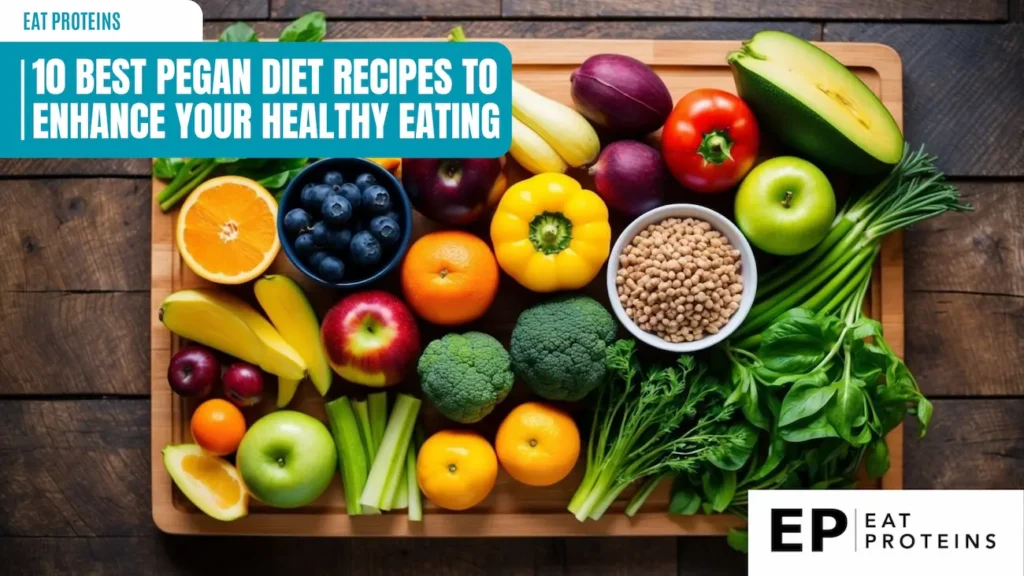
The Pegan diet combines elements of both the paleo and vegan diets, focusing on whole, unprocessed foods. This approach not only promotes better health but also offers delicious ways to enjoy meals. It emphasizes vegetables, healthy fats, and quality protein while avoiding refined sugar and grains.
I believe that finding easy and tasty recipes is key to enjoying any diet. The following list highlights ten of my favorite Pegan recipes that are simple to prepare and satisfying to eat. These recipes will help anyone maintain a balanced diet while savoring flavorful dishes.
1. Kale and Sweet Potato Hash
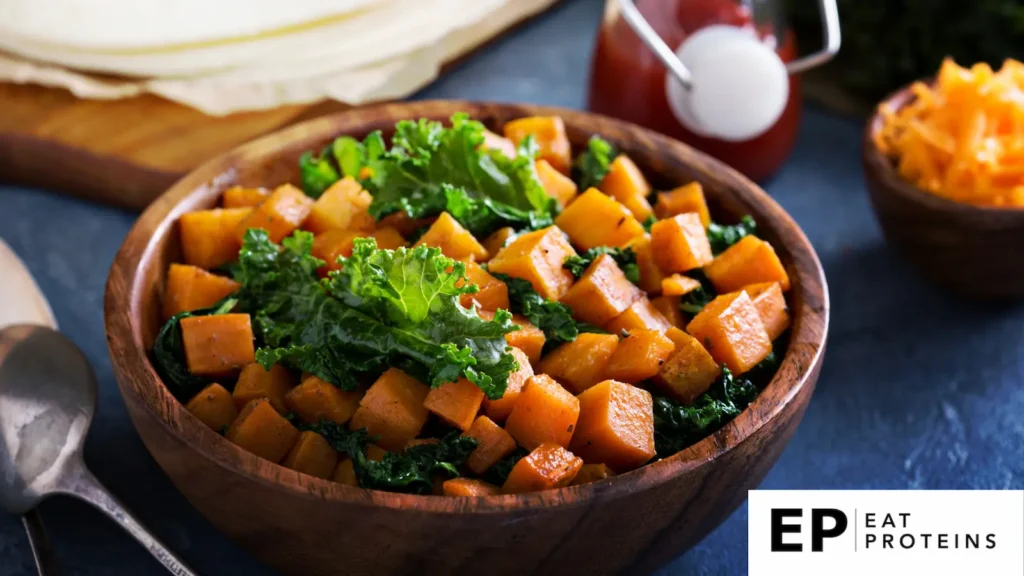
Kale and sweet potato hash is a nutritious dish that combines the earthy flavors of sweet potatoes with the hearty, green texture of kale. This recipe is simple and quick to prepare, making it a great choice for any meal.
To make this dish, you will need the following ingredients: kale, sweet potatoes, olive oil, garlic, salt, and pepper.
Here’s how I make it:
- Prepare the sweet potatoes: Peel and dice 2 medium sweet potatoes into small cubes. Boil them for about 5 minutes until slightly tender.
- Sauté the garlic: In a large skillet, heat 2 tablespoons of olive oil over medium heat. Add 2 minced garlic cloves and sauté for about 1 minute.
- Cook the sweet potatoes: Add the boiled sweet potatoes to the skillet. Cook them for 5-7 minutes until they are golden brown.
- Add the kale: Stir in 4 cups of chopped kale. Cook for another 3-5 minutes until the kale is wilted.
- Season: Add salt and pepper to taste before serving.
This dish is not only tasty but also brings a variety of nutrients to my plate.
2. Grilled Chicken with Mango Salsa
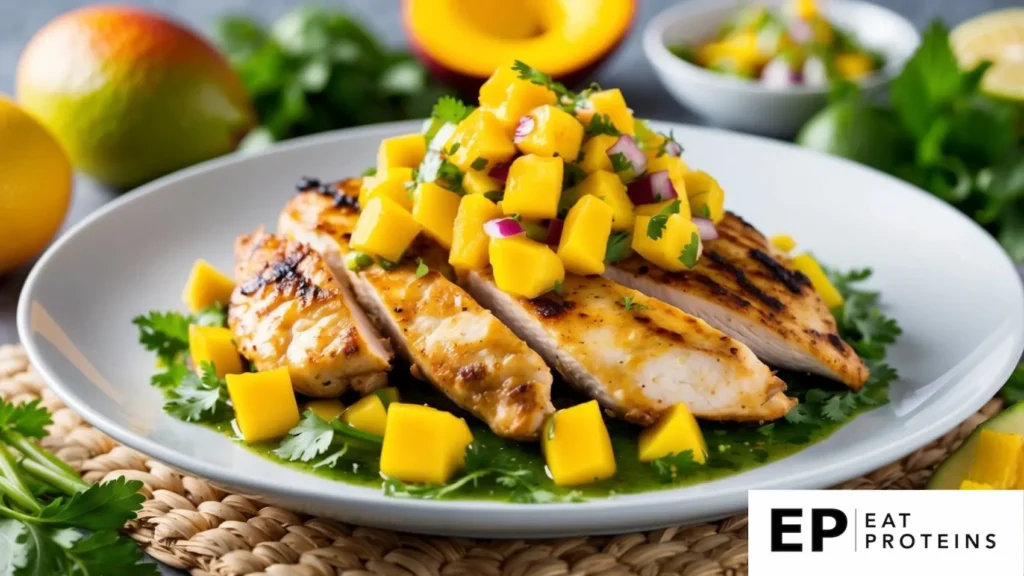
Grilled Chicken with Mango Salsa is a fresh and flavorful dish. It combines juicy chicken with sweet and tangy mango salsa. This recipe fits well within the Pegan diet, focusing on whole foods and healthy ingredients.
Making this dish is easy and quick. I can prepare it in about 30 minutes. The ingredients I need include chicken breasts, mango, red onion, cilantro, lime juice, salt, and pepper.
Here are the simple steps I follow:
- Preheat the grill to medium-high heat.
- Season the chicken breasts with salt and pepper.
- Grill the chicken for about 6-7 minutes on each side, until cooked through.
- While the chicken cooks, dice the mango and red onion.
- In a bowl, mix the mango, onion, chopped cilantro, lime juice, salt, and pepper.
- Once the chicken is done, let it rest for a few minutes before slicing.
- Serve the sliced chicken topped with the mango salsa.
This dish is packed with flavor and nutrition, making it a great choice for my Pegan meals.
3. Zucchini Noodles with Avocado Pesto
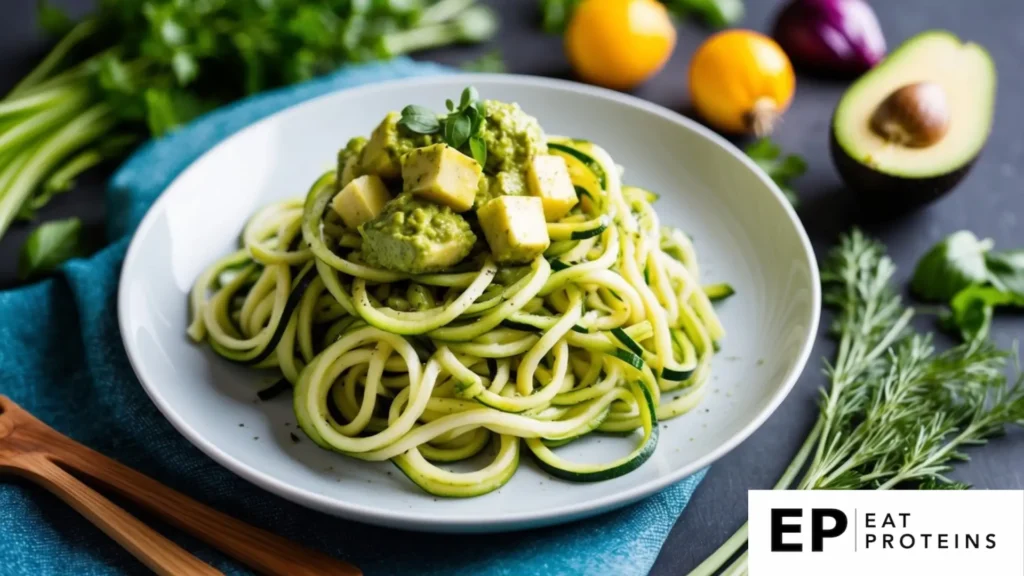
Zucchini noodles, also known as “zoodles,” are a popular low-carb alternative to traditional pasta. They are made by spiralizing fresh zucchini into noodle shapes. This dish is topped with avocado pesto, a creamy, flavorful blend that’s easy to prepare.
Making zucchini noodles with avocado pesto is simple and quick. I can have it ready in about 20 minutes. Here are the steps I follow:
- Spiralize 2 medium zucchinis into noodles using a spiralizer.
- Prepare Pesto by blending 1 ripe avocado, 1 cup of fresh basil, 2 tablespoons of lemon juice, and a pinch of salt until smooth.
- Sauté the zoodles in a pan with 1 tablespoon of olive oil for about 2-3 minutes until tender.
- Combine the zucchini noodles with the avocado pesto in the pan. Mix well until the noodles are coated.
This recipe is not only delicious but also packed with nutrients. Avocados provide healthy fats, and zucchini is low in calories while being high in vitamins. Enjoy this dish warm for a refreshing meal.
4. Almond-Crusted Salmon
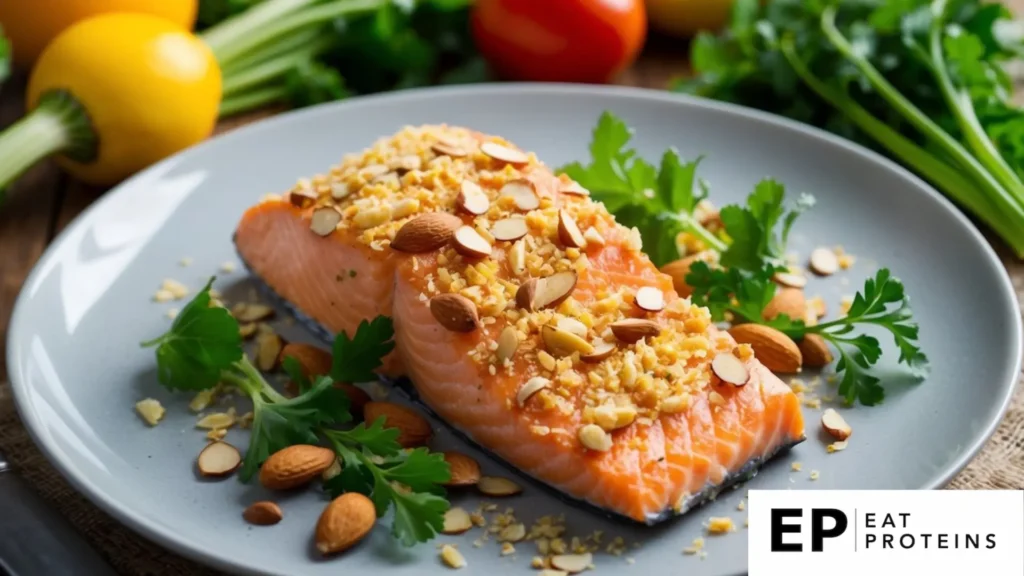
Almond-Crusted Salmon is a delicious and healthy dish. It features salmon fillets coated with a crunchy almond crust. This recipe is a great choice for anyone following a pegan diet.
I find this recipe easy to make and perfect for a quick meal. It takes about 30 minutes from start to finish. The ingredients are simple: salmon fillets, crushed almonds, and seasoning.
To prepare, I follow these steps:
- Preheat the oven to 400°F (200°C).
- Place the salmon fillets on a baking sheet.
- In a bowl, mix crushed almonds with salt, pepper, and any other preferred spices.
- Press the almond mixture onto the top of the salmon fillets.
- Bake for 15-20 minutes until the salmon is cooked through and the crust is golden.
This dish pairs well with roasted vegetables or a fresh salad. The nutty flavor of the almonds enhances the rich taste of the salmon, making it a satisfying meal.
5. Roasted Brussels Sprouts and Butternut Squash
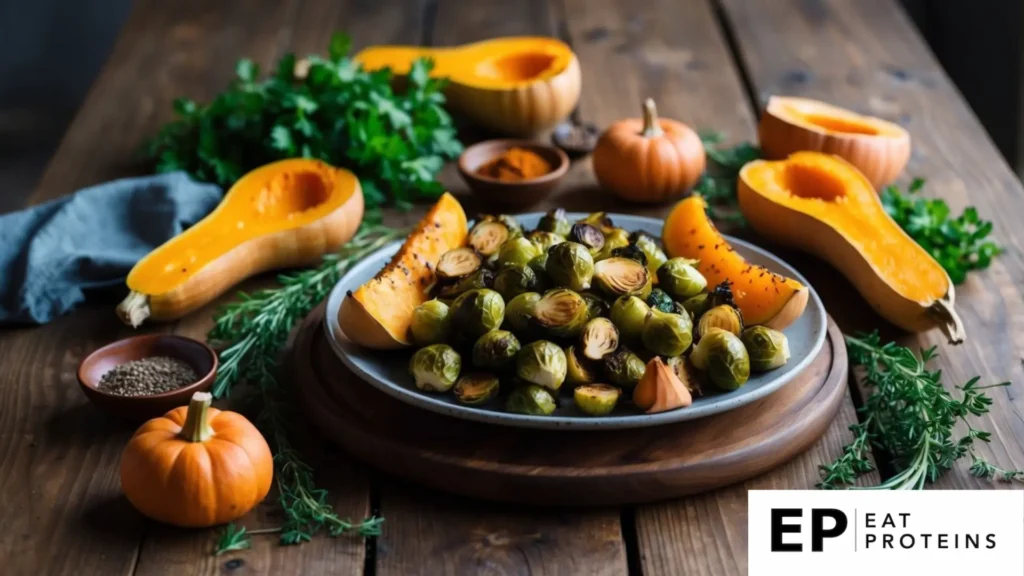
Roasted Brussels sprouts and butternut squash is a delicious and nutritious dish. Both ingredients are packed with vitamins and minerals, making them a great choice for the pegan diet.
I find this recipe easy to make, perfect for a weeknight dinner or a side dish for gatherings. It takes about 30 minutes from start to finish.
Here’s how I prepare it:
- Preheat the oven to 425°F (220°C).
- Cut the Brussels sprouts in half and peel the butternut squash. Dice it into cubes.
- Toss the vegetables in olive oil, salt, and pepper.
- Spread them evenly on a baking sheet.
- Roast for 20-25 minutes until they are tender and slightly caramelized.
This dish is versatile. I can enjoy it on its own or add it to salads for extra flavor and texture. The combination of the earthy Brussels sprouts and sweet butternut squash creates a balanced dish that fits well into my pegan meals.
6. Coconut-Curry Shrimp
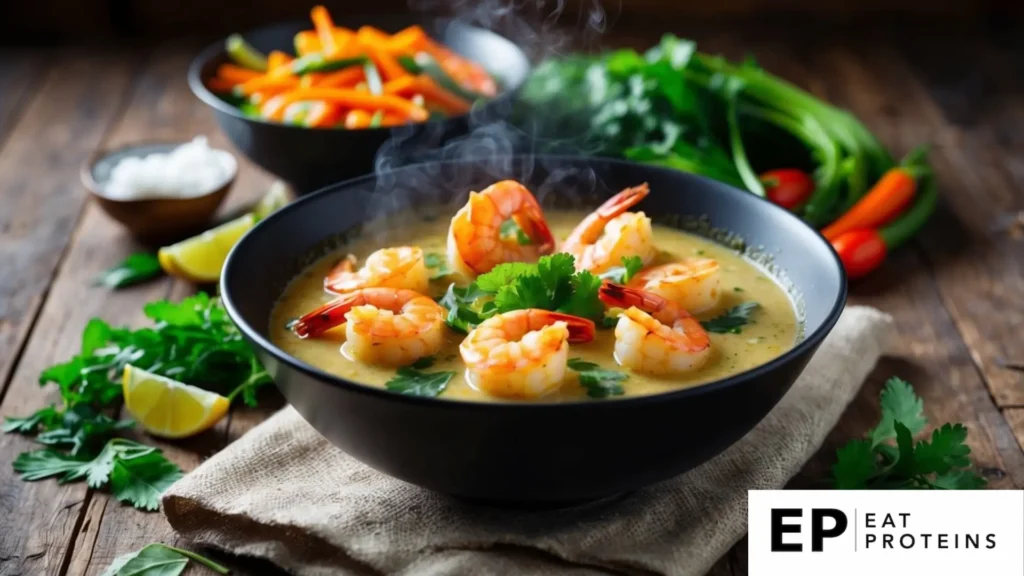
Coconut-curry shrimp is a flavorful dish that combines shrimp with rich coconut milk and spices. It’s perfect for a pegan diet because it uses whole foods and is low in refined ingredients.
I find this recipe easy to make, and it takes about 30 minutes from start to finish. The key ingredients include shrimp, coconut milk, curry powder, and vegetables like bell peppers.
Here’s how I make it:
- In a large skillet, heat 1 tablespoon of coconut oil over medium heat.
- Add 1 chopped onion and 2 minced garlic cloves. Cook until soft.
- Stir in 1 tablespoon of curry powder and cook for about 1 minute.
- Pour in 1 can (13.5 ounces) of coconut milk and bring it to a simmer.
- Add 1 pound of peeled shrimp and chopped bell pepper. Cook until the shrimp turns pink, about 5-7 minutes.
- Season with salt and pepper to taste before serving.
I enjoy serving this dish over a bed of leafy greens or cauliflower rice for a nutritious meal.
7. Pegan Buddha Bowl
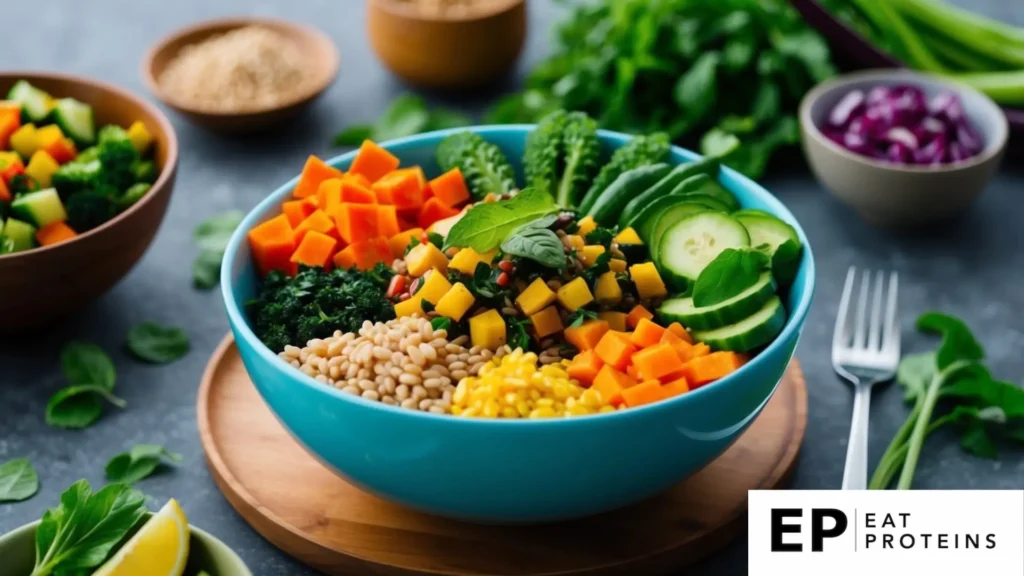
A Pegan Buddha Bowl is a balanced dish combining elements of both paleo and vegan diets. It includes a variety of healthy ingredients, making it nutritious and satisfying.
I find this dish easy to prepare, even for beginners. It allows for customization based on personal preferences or what I have on hand.
Here are the steps to make one:
- Choose a Base: Start with quinoa or brown rice. Cook according to package instructions.
- Select Veggies: Pick at least three colorful vegetables. I like roasting sweet potatoes, sautéing spinach, and adding fresh cucumbers.
- Add Protein: Include a protein source like chickpeas or grilled chicken. Cook as desired.
- Include Healthy Fats: Add avocado slices or a handful of nuts for healthy fats.
- Dress It Up: Drizzle with olive oil or a tahini sauce for flavor.
- Garnish: Finish with fresh herbs like cilantro or parsley.
This bowl is great for lunch or dinner. Each ingredient adds its own nutrients, resulting in a delicious and wholesome meal.
8. Turkey Meatballs with Zucchini
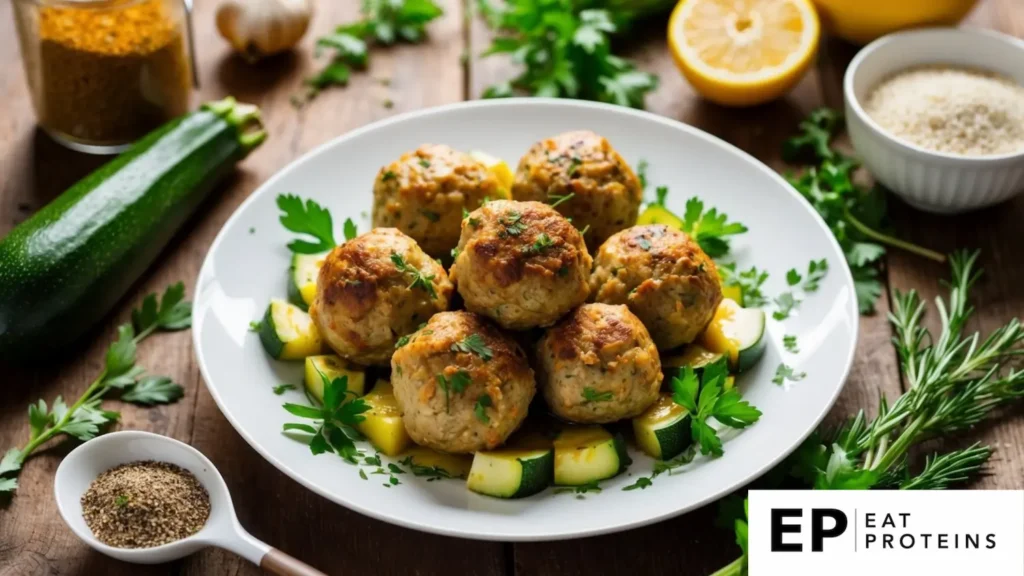
Turkey meatballs with zucchini are a healthy and delicious choice for a pegan diet. They are packed with protein and use zucchini as a healthy vegetable option.
These meatballs are easy to make and require just a few ingredients. I often use ground turkey, grated zucchini, garlic, and herbs to add flavor.
Here’s how I prepare them:
- Preheat the oven to 400°F (200°C).
- In a bowl, mix 1 pound of ground turkey, 1 cup of grated zucchini, 2 minced garlic cloves, and any herbs I enjoy, like basil or oregano.
- Shape the mixture into meatballs, about 1 inch in diameter.
- Place them on a baking sheet lined with parchment paper.
- Bake for 20-25 minutes, or until they reach an internal temperature of 165°F (74°C).
These meatballs are versatile. I can serve them with a salad, in a lettuce wrap, or simply enjoy them on their own. They bring a tasty and nutritious option to my meals.
9. Cauliflower Rice Stir-Fry

Cauliflower rice is made by grating or processing cauliflower into small, rice-sized pieces. It is a popular low-carb and gluten-free substitute for traditional rice.
Making cauliflower rice stir-fry is simple and quick. I enjoy it because it offers a healthy base for various ingredients.
To prepare this dish, follow these steps:
- Rice the Cauliflower: Take one medium head of cauliflower and chop it into florets. Use a food processor or box grater to turn it into rice-sized pieces.
- Sauté Aromatics: Heat 2 tablespoons of olive oil in a large pan over medium heat. Add 2 clove of minced garlic and sauté for about 1 minute until fragrant.
- Cook the Rice: Add the cauliflower rice to the pan and stir-fry for about 5-7 minutes, stirring frequently until tender but still slightly crisp.
- Add Vegetables: Include 1 cup of mixed vegetables such as bell peppers, carrots, and peas. Stir-fry for another 3-4 minutes.
- Season: Mix in 2 tablespoons of soy sauce or coconut aminos for flavor. Cook for an additional minute and serve.
This dish is versatile, allowing me to use whatever vegetables I have on hand.
10. Spaghetti Squash with Marinara
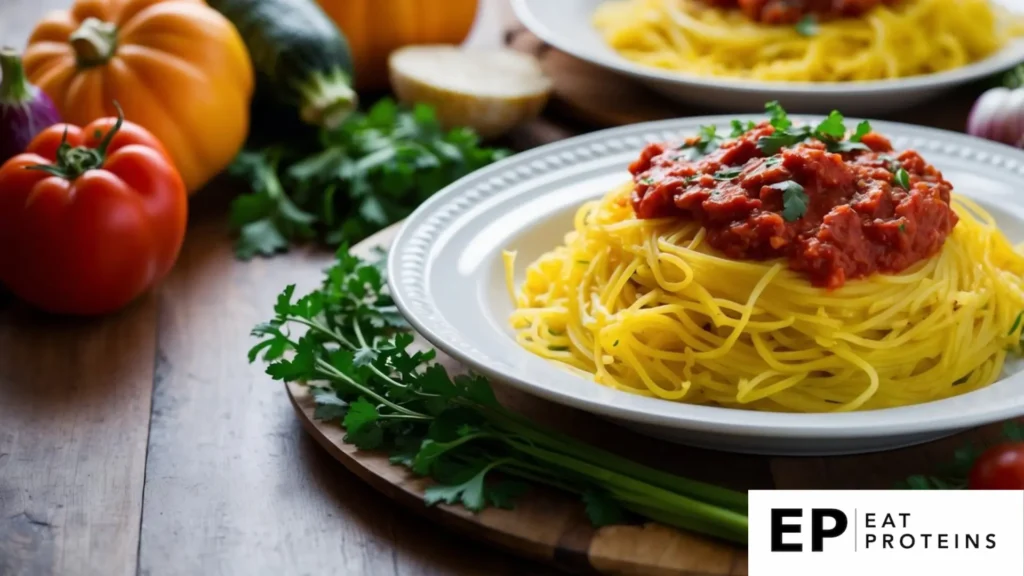
Spaghetti squash is a unique vegetable often used as a low-carb alternative to pasta. When cooked, its flesh separates into strands that resemble spaghetti. This makes it a popular choice for those following the pegan diet.
I find this dish easy to prepare. It only requires a few ingredients and simple steps.
- Start by preheating the oven to 400°F (200°C).
- Cut the spaghetti squash in half lengthwise and scrape out the seeds.
- Drizzle olive oil and sprinkle salt and pepper on the inside of each half.
- Place the squash cut-side down on a baking sheet and roast for about 30-45 minutes.
- While it roasts, heat some marinara sauce in a saucepan.
- Once the squash is tender, use a fork to scrape the flesh into strands.
- Top it with warm marinara sauce and serve.
This meal is satisfying and healthy. It fits well within the pegan framework, allowing for plenty of vegetables and healthy fats.
What Is the Pegan Diet?
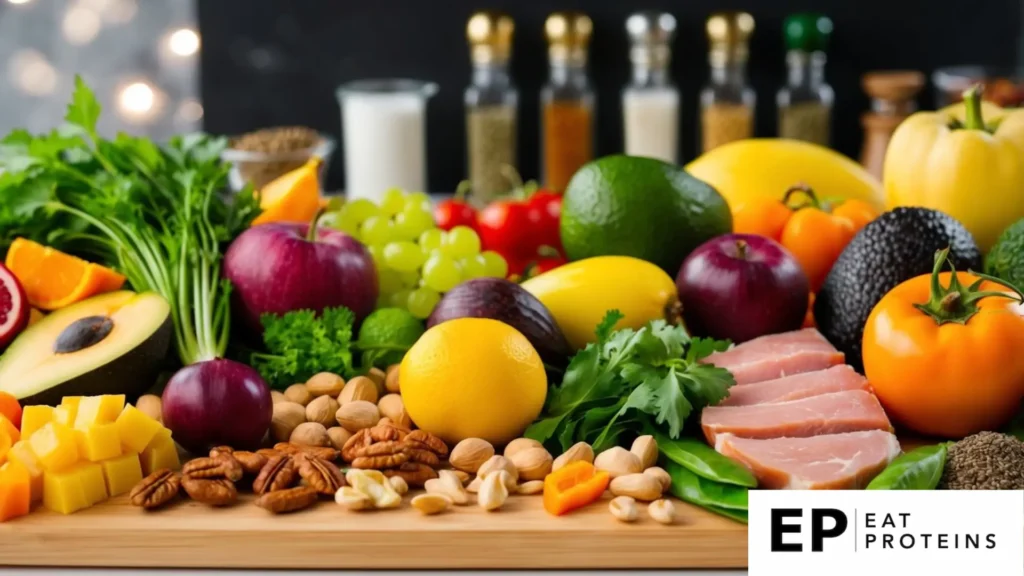
The Pegan diet combines elements of both the Paleo and Vegan diets. This approach focuses on whole foods while emphasizing health and sustainability.
How Does the Pegan Diet Combine Paleo and Vegan Principles?
The Pegan diet encourages eating fruits, vegetables, nuts, seeds, and healthy fats. It avoids processed foods, dairy, and grains. This blend supports nutrition with plant-based options while reducing animal products.
In my experience, the diet emphasizes quality over quantity. I select organic and seasonal produce for the best nutrients. For protein, I turn to legumes and nuts, while fish is a great choice on occasion. The goal is to create meals that fuel the body while being mindful of environmental impact.
What Are the Health Benefits of the Pegan Diet?
The Pegan diet offers several potential health benefits. It may help with weight management, improve digestion, and reduce inflammation. By focusing on whole foods, I notice increased energy levels throughout the day.
Eating predominantly plant-based can lead to lower cholesterol levels. Moreover, I find that the diet is rich in antioxidants, which may support overall health. By prioritizing healthy fats from sources like avocados and nuts, I help promote heart health.
In summary, I believe the Pegan diet provides a balanced approach for those seeking a healthier lifestyle.
What Are Essential Pegan Diet Ingredients?
To follow a Pegan diet, I focus on a mix of nutritious foods that promote health. This diet includes plenty of fruits, vegetables, healthy fats, and high-quality proteins, all of which provide essential nutrients.
What Fruits and Vegetables Are Included in the Pegan Diet?
I prioritize a variety of colorful fruits and vegetables. These foods are rich in vitamins, minerals, and antioxidants. Leafy greens like spinach and kale are key players in my meals. Cruciferous vegetables, such as broccoli and cauliflower, offer fiber and essential nutrients.
Berries, including blueberries and strawberries, are excellent sources of antioxidants. They help fight inflammation and improve overall health. I also choose fruits like avocados, which are high in healthy fats, enhancing my meals while providing depth and flavor.
What Healthy Fats Are Recommended for the Pegan Diet?
Healthy fats are a crucial part of the Pegan diet. I incorporate sources like avocados, olives, and nuts into my food. These fats are heart-healthy and support brain function.
I prefer olive oil as my main cooking fat. It’s high in monounsaturated fats and has anti-inflammatory properties. Additionally, I include seeds such as chia and flaxseeds for their omega-3 fatty acids. They provide protein and fiber, making my meals more satisfying.
How Can You Incorporate High-Quality Protein into the Pegan Diet?
For high-quality protein, I focus on plant-based options and lean meats. Legumes like lentils and chickpeas are packed with protein and fiber. They make great bases for salads and stews.
I also include fish, particularly fatty types like salmon, which are rich in omega-3 fatty acids. Eggs are another excellent source of protein. I choose organic and free-range options for better quality. Quinoa is a favorite grain of mine, as it contains all nine essential amino acids, making it a complete protein source.
How Can You Cook Pegan Diet Recipes?
When cooking Pegan diet recipes, I find that using fresh ingredients and smart meal prep strategies can make a big difference. Focusing on seasonal produce and adding flavor boosters helps create delicious and nutritious meals. Here are some tips on making your Pegan cooking enjoyable and effective.
How Can You Use Seasonal Produce in Pegan Diet Recipes?
I recommend choosing seasonal fruits and vegetables for the best flavor and nutrition. Seasonal produce is often fresher and more affordable, making meals tastier and easier to prepare.
Ideas for Seasonal Produce:
- Spring: Asparagus, peas, and strawberries
- Summer: Tomatoes, zucchini, and berries
- Fall: Pumpkins, apples, and squash
- Winter: Kale, carrots, and citrus fruits
Shopping at local farmers’ markets can also connect you with fresh options. Planning meals around what’s in season helps me create diverse dishes that change with the seasons.
How Can You Simplify Meal Prepping for the Pegan Diet?
Meal prep simplifies cooking Pegan recipes. I set aside a few hours each week to prepare ingredients, which saves time during busy days. Chopping veggies, cooking grains, and marinating proteins the night before can make a huge difference.
I suggest storing prepped items in clear containers for easy access. Here’s how I do my meal prep:
- Choose a day: I usually pick Sunday.
- Basic prep: Wash and chop vegetables. Cook grains like quinoa or rice.
- Batch cooking: Make a large dish, like a vegetable stew, to serve throughout the week.
This approach reduces stress and encourages healthy eating.
What Are Some Flavor Boosters for Pegan Diet Meals?
Adding flavor is essential in Pegan recipes. I focus on using herbs, spices, and healthy fats to enhance taste without extra calories. Fresh herbs like basil, cilantro, and parsley can brighten any dish.
Here are some of my favorite flavor boosters:
- Spices: Cumin, paprika, and turmeric
- Healthy fats: Olive oil, avocado, and nuts
- Acid: Lemon juice or vinegar adds a fresh zing
Experimenting with different combinations can make meals exciting. I enjoy mixing flavors until I find the perfect balance.
